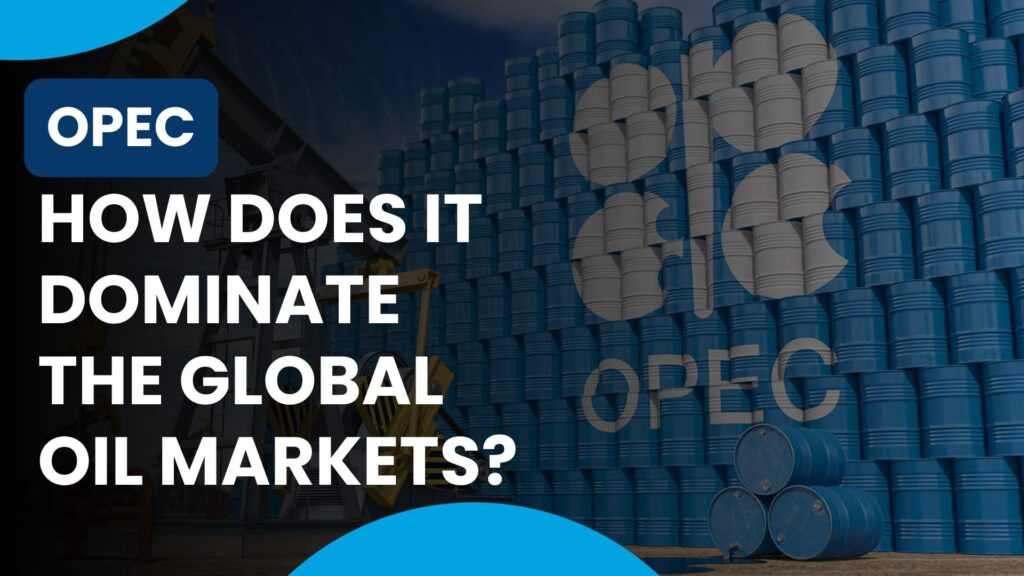
The Organization of the Petroleum Exporting Countries, commonly known as OPEC, has long been a dominant force in the global oil industry.
Comprising 13 member countries, OPEC collectively controls a significant portion of the world’s oil reserves and production.
This particular organization is so powerful and it has maintained its dominance over the global oil markets, shaping energy policies, influencing prices, and impacting economies worldwide.
Let’s venture into the history and how OPEC is a tremendous factor in the crude oil price statistic.
History of OPEC :

OPEC was founded in 1960 when five major oil-producing countries – Iran, Iraq, Kuwait, Saudi Arabia, and Venezuela – came together in Baghdad to form a collective organization. Their primary aim was to assert control over their oil resources and gain leverage in negotiations with international oil companies.
OPEC’s Dominance Factors
Vast Oil Reserves:
OPEC member countries possess a substantial share of the world’s proven oil reserves. Saudi Arabia, in particular, boasts immense reserves, making it a pivotal player in OPEC’s dominance.
Production Powerhouse:
OPEC is responsible for a significant portion of global oil production. The organization’s ability to increase or decrease production levels collectively impacts global oil supply, affecting prices and market dynamics.
Price Influence:
OPEC can exert considerable influence on oil prices through production quotas and supply adjustments. Decisions made during OPEC meetings have an immediate impact on global oil prices, affecting consumer costs and energy industry revenues.
Geopolitical Importance:
Several OPEC member countries are strategically located in regions with significant geopolitical importance. This positioning gives OPEC members considerable leverage on the world stage and allows them to influence global energy security.
Pricing Mechanism:
OPEC’s pricing mechanism, often referred to as the “OPEC Basket Price,” serves as a benchmark for crude oil pricing worldwide. This further solidifies OPEC’s role in determining oil prices.
Challenges to OPEC Dominance:
While OPEC has maintained its dominance over the years, it faces several challenges:
Non-OPEC Production:
The rise of non-OPEC oil producers, particularly the United States, has altered the global oil landscape. The shale revolution and advancements in drilling technology have increased oil production outside of OPEC’s control.
Renewable Energy Transition:
The global push for cleaner energy sources and the transition to renewable energy alternatives pose a long-term threat to OPEC’s dominance. As the world reduces its reliance on fossil fuels, OPEC’s influence could wane.
Market Volatility:
OPEC’s attempts to manage oil prices through production quotas have sometimes resulted in market volatility. Disagreements among member countries on production levels can undermine the organization’s effectiveness.
Final Note:
OPEC’s dominance over the global oil markets remains a significant force in the energy world. The organization’s control over reserves, production levels, and pricing mechanisms gives it substantial influence over the global economy and geopolitics. However, OPEC faces ongoing challenges from non-OPEC producers, renewable energy trends, and internal disagreements.
As the world continues to evolve towards cleaner energy solutions, OPEC may need to adapt and diversify its strategies to maintain its position of dominance in the decades to come. Nevertheless, for now, OPEC remains a central player in the intricate web of the global oil market, shaping energy policies and impacting the lives of billions around the world.
That’s all for today folks. We’ll be back with more content soon.
Until then, Happy Trading!!
Commodity Samachar
Learn and Trade with Ease